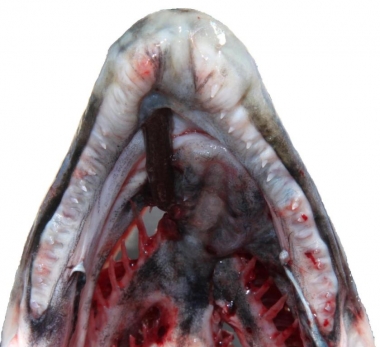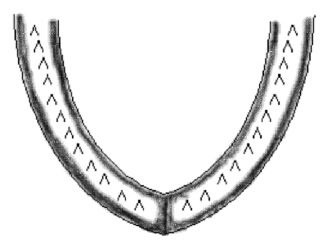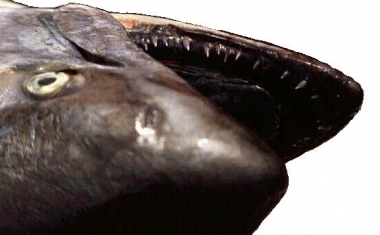Newf
Crew Member
Was out yesterday with my grandaughter and we landed a fish that I felt 99% certain was a chinook. It was not clipped and the tail was full of silver and had virtually no spots other than a couple on the top portion. However, the gum line at the base of the teeth was dark/black unlike a coho. I had sort of remembered reading something about the white gum line being the main indicator for coho but with the lack of spots and colouring of the tail it had me thinking I was wrong and the 1% doubt was enough for me to release the fish. Found this article below which does note that the gum line of the lower jaw is the single best feature and the one used by enforcement officer if there is any doubt. Looks like we released a nice fat chinook, but I had never seen one with a tail that looked like that. Should have taken a photo but I was pissed after losing 3 nice fish at the boat in the 30 minutes prior to this one. My 14yr old granddaughter and I were just not in sync in getting the fish in the net on those 3 but did manage to get sorted out and netted 4 nice pinks, 1 clipped coho and a 7-8lb chinook. (with black gums and lots of spots on the tail LOL)

Lower jaw of a coho salmon. Note the distinct banding pattern of dark to light to dark.



Note that the coloration at the base of the teeth is consistent with the area inside and outside the mouth.


Jaw line is consistent in color, although colors can vary substantially.
Header photo by Frank Taubenkrau
Is it a coho or Chinook?
Two commonly caught species of salmon are coho and Chinook. Fishing regulations require anglers to correctly identify salmon species as restrictions such as legal lengths and seasons often vary based on the species. Anglers who incorrectly identify their catch and thus do not follow regulations, may have their fish confiscated and have to pay a fine.Do's and don't's for salmon identification:
- DO use the gum line on the LOWER jaw for identifying a salmon. It is the single best feature to use. It is also the characteristic that is most likely to be used by enforcement officers in deciding whether a violation has occurred and if a citation should be issued.
- DO carefully release any salmon if you are unable to make a positive identification and the fish may be a prohibited species.
- DON'T rely on body color or spots to identify a salmon caught in the ocean. Salmon in the ocean phase of their life cycle will not show the colors that are common after they enter the estuaries and rivers. All ocean salmon are primarily silver in color, and there can be wide variations in spots and color both within and between species.
- DON'T use the presence or absence of a hooked nose as an identifying characteristic. A hooked nose is a common secondary sexual characteristic of male salmon as they approach maturity, and is present in all species.
- DON'T use the size of a salmon to determine the species. Although the Chinook grows to be the largest of our salmon, with fish over 50 pounds being caught on occasion, the average size of an ocean caught Chinook is 12-15 pounds. On the other hand coho have been observed in the 25-30 pound range.
Coho "silver" salmon (Oncorhynchus kisutch)
Lower jaw of a coho salmon. Note the distinct banding pattern of dark to light to dark.

- The coloration on the lower jaw exhibits a distinct banding pattern. Outside the base of the teeth there is a dark band, at the base of the teeth is a white or very light band, and inside of the base of the teeth is another dark band.
- Bone segments in the fin rays of the tail can be felt by lightly running a fingernail along the top of the fin ray.
- Teeth are sharp and firmly set in the jaw.
- Tail may or may not have "round" spots in the upper lobe. Occasionally, coho will have spots in both lobes of the tail.
- "Small" spots may or may not be present on the back.


Note that the coloration at the base of the teeth is consistent with the area inside and outside the mouth.
Chinook "king" salmon (Oncorhynchus tshawytscha)

- The lower jaw is a uniform dark coloration (in some cases may be mottled).
- Bone segments in the fin rays of the tail CANNOT be felt by lightly running a fingernail along the top of a fin ray.
- Teeth are sharp and firmly set in the jaw.
- Tail may or may not have "round" spots in both the upper and lower lobe.
- "Large" wavy spots are usually present on the back

Jaw line is consistent in color, although colors can vary substantially.
Header photo by Frank Taubenkrau
